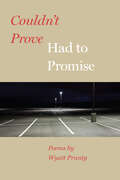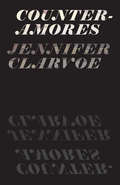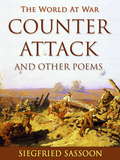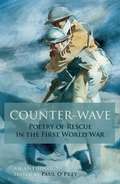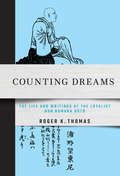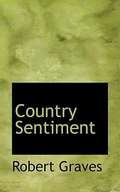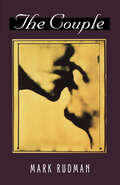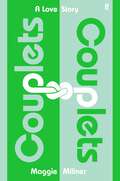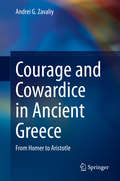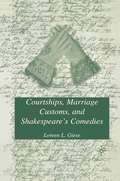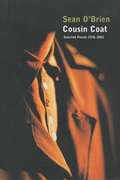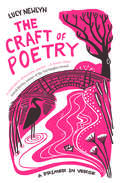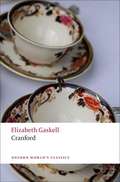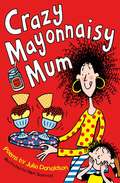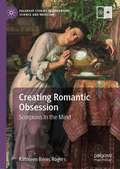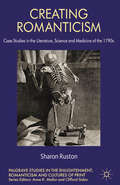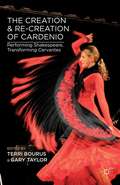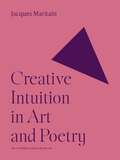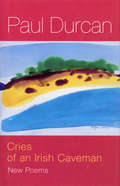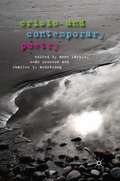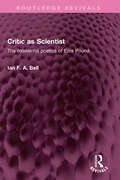- Table View
- List View
Couldn't Prove, Had to Promise (Johns Hopkins: Poetry and Fiction)
by Wyatt PruntyIn Couldn’t Prove, Had to Promise, Wyatt Prunty ushers readers into a seesaw world, one that teeters between small fables of childish misgivings and adult assurances. Alternately shadowed and illuminated by nostalgia, this deft, witty volume brings together seventeen of Prunty’s recent poems, seven of which have been previously published in Poetry, the Hopkins Review, the Kenyon Review, and Blackbird.In "Crescent Theater, Schenectady, NY," a silent-movie accompanist reads his foreign newspaper after work as he listens, ever the outsider, "to his children using English / For everything they wish." In "Rules," a small girl, told she can’t go to the school nurse "every time some bad thing happens," plaintively wonders, "Where do you go?" And in "Making Frankenstein," a boy who has cajoled his parents into letting him see The Curse of Frankenstein wakes to a nightmare. His father bans horror films as "too anatomical"; "What’s anatomical?" the boy wonders. Given a book that catalogs diseases, the worst of which come "from intimate contact," he is horrified by his father’s explanation of grownup intimacy: "That’s how you made your way into this world."Moving from a wry portrait of a husbandâ€�musing on mortalityâ€�whose Christmas tie lands in the gravy, to "Reading the Map," which grapples with the cartography of love, to "ad lib," a farewell that redefines farewell, these poems burnish the small triumphs and fears that fill our daily lives with humor and pathos. The book closes with a long, four-part poem, "Nod," which transports readers to a parking lot in July: an asphalt-as-inferno where Cain the cracker, or adversary-as-initiator, the pleuritic voice of disappointment, names the ways inversion makes a lie reliable and works people best as, like a joke or discount price, "It makes you feel you’re getting more by giving less." Funny, raw, and colorfully musical, "Nod" plays what teeters, like a tuning fork.
Counter-Amores (Phoenix Poets)
by Jennifer ClarvoeJennifer Clarvoe’s second book, Counter-Amores, wrestles with and against love. The poems in the title series talk back to Ovid’s Amores, and, in talking back, take charge, take delight, and take revenge. They suggest that we discover what we love by fighting, by bringing our angry, hungry, imperfect selves into the battle. Like a man who shouts for the echo back from a cliff, or the scientist who teaches her parrot to say, “I love you,” or the philosopher who wonders what it is like to be a bat, or Temple Grandin’s lucid imaginings of the last moments of cattle destined for slaughter, the speakers in these poems seek to find themselves in relation to an ever-widening circle of unknowable others. Yearning for “the sweet cool hum of fridge and fluorescent that sang ‘home,’” we’re as likely to find “fifty-seven clicks and flickering channels pitched to the galaxy.” Song itself becomes a site for gorgeous struggle, just as bella means both “beautiful” and “wars.”
Counter-Amores (Phoenix Poets)
by Jennifer ClarvoeJennifer Clarvoe’s second book, Counter-Amores, wrestles with and against love. The poems in the title series talk back to Ovid’s Amores, and, in talking back, take charge, take delight, and take revenge. They suggest that we discover what we love by fighting, by bringing our angry, hungry, imperfect selves into the battle. Like a man who shouts for the echo back from a cliff, or the scientist who teaches her parrot to say, “I love you,” or the philosopher who wonders what it is like to be a bat, or Temple Grandin’s lucid imaginings of the last moments of cattle destined for slaughter, the speakers in these poems seek to find themselves in relation to an ever-widening circle of unknowable others. Yearning for “the sweet cool hum of fridge and fluorescent that sang ‘home,’” we’re as likely to find “fifty-seven clicks and flickering channels pitched to the galaxy.” Song itself becomes a site for gorgeous struggle, just as bella means both “beautiful” and “wars.”
Counter-Attack and Other Poems (The World At War)
by Siegfried SassoonSiegfried Loraine Sassoon, CBE, MC (8 September 1886 – 1 September 1967) was an English poet, writer, and soldier. Decorated for bravery on the Western Front,[1] he became one of the leading poets of the First World War. This collection of poems was first published in May 1918. (Excerpt from Wikipedia)
Counter-wave: The Poetry Of Rescue In The First World War
by Paul O'PreyAs the centennial of World War I continues, this major new anthology commemorates a less well-known set of figures: poets who served, but without a weapon-those who were there not to take lives, but to save them. Featuring works by writers famous and forgotten, including Vera Brittain, John Masefield, Ernest Hemingway, and Robert Service, the book presents a different face of the war. Like the other war poets, these take us back to the muddy trenches, the danger and terror, and the numbing sense of loss-but they also have a different perspective. If possible, the losses, it seems, strike them harder. An unforgettable anthology honoring an unimaginable experience, Counterwave will be a lasting testament to the men and women of World War I.
Counter-wave (PDF): The Poetry Of Rescue In The First World War
by Paul O'PreyAs the centennial of World War I continues, this major new anthology commemorates a less well-known set of figures: poets who served, but without a weapon-those who were there not to take lives, but to save them. Featuring works by writers famous and forgotten, including Vera Brittain, John Masefield, Ernest Hemingway, and Robert Service, the book presents a different face of the war. Like the other war poets, these take us back to the muddy trenches, the danger and terror, and the numbing sense of loss-but they also have a different perspective. If possible, the losses, it seems, strike them harder. An unforgettable anthology honoring an unimaginable experience, Counterwave will be a lasting testament to the men and women of World War I.
Counting Dreams: The Life and Writings of the Loyalist Nun Nomura Bōtō
by Roger K. ThomasCounting Dreams tells the story of Nomura Bōtō, a Buddhist nun, writer, poet, and activist who joined the movement to oppose the Tokugawa Shogunate and restore imperial rule. Banished for her political activities, Bōtō was imprisoned on a remote island until her comrades rescued her in a dramatic jailbreak, spiriting her away under gunfire. Roger K. Thomas examines Bōtō's life, writing, and legacy, and provides annotated translations of two of her literary diaries, shedding light on life and society in Japan's tumultuous bakumatsu period and challenging preconceptions about women's roles in the era.Thomas interweaves analysis of Bōtō's poetry and diaries with the history of her life and activism, examining their interrelationship and revealing how she brought two worlds—the poetic and the political—together. Counting Dreams illustrates Bōtō's significant role in the loyalist movement, depicting the adventurous life of a complex woman in Japan on the cusp of the Meiji Restoration.
The Couple: The Rider Quintet, vol. 4 (Wesleyan Poetry Series)
by Mark RudmanIn his Rider trilogy, Mark Rudman perfected a mixed genre form — combining dialogue, lyric and prose. While employing some of the same techniques that have become "signature Rudman" — the compact, colloquial line, dazzling shifts from popular culture to classical history — The Couple also breaks new ground. This new book is a collection of discrete poems organized around four poem sequences, "Long-Stemmed Rose," "The Shallowness of the Lake," "Perseus Surprised, Andromeda Unbound," and "Fragile Craft." As the title suggests, the theme of relationships, both dark and erotically-charged, emerges here as Rudman's focus. The couples in the book include parents, lovers, a young boy and girl in elementary school, Perseus and Andromeda, Mary Ure and Robert Shaw, and Dean Martin and Jerry Lewis.
Couplets
by Maggie MillnerMaggie Millner's seductive debut is a novel-in-verse about a woman in her late twenties who leaves a long-term relationship with a boyfriend for another woman. The affair thrusts her from an outwardly conventional life into queerness, polyamory, kink, and unalloyed, consuming desire. What ensues is an exploration of obsession, gender, identity-making, sexual experiment, and the art and act of literary transformation. Couplets is a dazzling fusion of form and content, chronicling the strictures, structures and pitfalls of relationships - the mirroring, the pleasing, the small jealousies and disappointments. Playful, clever, lovestruck, griefstruck, its narrator dances a tightrope of her own invention with captivating passion and skill.Advance praise: 'I deeply adore this shattering, sexy, funny book- rarely have I felt more privileged to be granted a view into a mind than I did while reading Couplets.' Megan Nolan'Totally compelling and brilliant. I couldn't put it down. A work of precise craft and intelligence. Intimate, funny and moving.' Cecilia Knapp'Couplets compelled me like a love affair-I didn't want to eat, didn't want to go to bed, didn't want to get off the subway, I just wanted to hear the story it was telling, which was, ultimately, a story about form-what are the forms (of intimacy, vocation, domesticity, verse, pleasure) we want to be held by, and to break free from? I cannot remember the last time I was this gripped by a voice or its questions. Reading it was a thrill, a rearrangement of my psychic molecules.' Leslie Jamison, author of Make It Scream, Make It Burn'A dazzling, feather-light tour de force-witty and effervescent and insightful, and so sexy, and so real.' Elif Batuman, author of Either/Or'In this riveting debut, Maggie Millner makes the rhyming couplet-that supposedly staid, outmoded vehicle of 18th century moralism-an engine of radical metamorphosis and scorching sex. Couplets plunges us into desire so fierce it overwrites existence, exiling us from the lives we know. This is an endlessly inventive, wise, exhilarating book.' Garth Greenwell, author of Cleanness and What Belongs to You
Courage and Cowardice in Ancient Greece: From Homer to Aristotle
by Andrei G. ZavaliyThe book offers the first comprehensive account of the debate on true courage as it was raging in ancient Greece, from the times when the immensely influential Homeric epics, the Iliad and the Odyssey, were composed, to the period of the equally influential author, Aristotle. The many voices that contribute to this debate include poets, authors of ancient dramas and comedies, historians, politicians and philosophers. The book traces the origin of the earliest ideal of a courageous hero in the epic poems of Homer (8th century BCE), and faithfully records its transformations in later authors, which range from an emphatic denial of the Homeric standards of courage (as in comedies of Aristophanes and some Dialogues of Plato) to the strong revisionist tendencies of Aristotle, who attempts to restore genuine courage to its traditional place as an exclusively martial, male virtue.Without attempting to cover the whole of the Western history, the book is able to explore the most important primary Greek sources on the subject matter in greater details, and provide the reader with a comprehensive picture of the changes in both popular and philosophical conceptualizations of the standards of courage from the Archaic period to the middle of the 4th century BCE. A deeper understanding of the history of the debate on courage should help to shape the modern discussions as well, as it becomes obvious that many of the questions on courage and cowardice that are still raised by the contemporary authors from different fields, have been thoroughly considered during the early stages of Greek culture. The book seeks to undermine a common stereotype of a single, unified view on courage and cowardice in Ancient Greece and shows that the current debates on what constitutes genuine courageous character can be traced to the various direct and indirect discussions on this subject matter by the ancient authorities.
Courtships, Marriage Customs, and Shakespeare's Comedies
by L. GieseLoreen L. Giese's study of over 5000 important folios of court depositions contemporary with Shakespeare's plays demonstrates the complex ways those plays participate in and comment upon their culture, rather than stand apart from it. Both the court records and the plays present women as agents who are capable of challenging their traditional roles.
Cousin Coat: Selected Poems 1976¿2001
by Sean O'BrienSean O’Brien is widely acknowledged as one of the most gifted English poets now writing, and as a leading poet-critic. Cousin Coat collects the best of O’Brien’s work to date; long-time O’Brien aficionados will be grateful to have so much of the early work available again, while recent converts will be delighted to find that O’Brien’s boisterous wit, intelligence and astonishing technical fluency were as much in evidence at the outset of his career as they are now. While some of O’Brien’s mises en scène and dramatis personae have remained constant over the years – the urban dystopia, the train, the rain, the underground, the canal, the lugubrious procession of conductors, policemen, head teachers and detectives – their shadows have deepened with O’Brien’s sense of their historicity and mythic power. His imaginative landscape has become impressively varied: as well as blackly paranoid fantasy and scabrous political critique, O’Brien’s work now encompasses English pastoral, comic set-piece and metaphysical lyric, and shows a growing fascination with song-form and dramatic verse. Cousin Coat represents the best introduction to one of the most significant English poets of the last thirty years. ‘The bard of urban Britain’ The Times ‘A collection which holds numerous satisfactions for anyone with a sense of humour and a political consciousness’ Guardian on Ghost Train ‘The most invigorating new book of poems I’ve read this year’ Sunday Telegraph on Downriver
Cowley's Essays
by Abraham CowleyThe calm spirit of Cowley's "Essays" was in all his life. As he tells us in his Essay "On Myself," even when he was a very young boy at school, instead of running about on holidays and playing with his fellows, he was wont to steal from them and walk into the fields, either alone with a book or with some one companion, if he could find any of the same temper.
The Craft of Poetry: A Primer in Verse
by Lucy NewlynA wonderfully accessible handbook to the art of writing and reading poetry—itself written entirely in verse How does poetry work? What should readers notice and look out for? Poet Lucy Newlyn demystifies the principles of the form, effortlessly illustrating key approaches and terms—all through her own original verse. Each poem exemplifies an aspect of poetic craft—but read together they suggest how poetry can evoke a whole community and its way of life in myriad ways. In a series of beautiful meditations, Newlyn guides the reader through key aspects of poetry, from sonnets and haiku to volta and synecdoche. Avoiding glosses and notes, her poems are allowed to speak for themselves, and show that there are no limits to what poetry can communicate. Newlyn’s timeless verse will appeal to lovers of poetry as well as to practitioners, teachers, and students of all ages.Onomatopoeia You’d play here all day if you had your way— near the stepping-stones, in the clearest of rock-pools, where water slaps and slips; where minnows dart, and a baby trout flop-flips.
Cranford
by Elizabeth Cleghorn GaskellA portrait of the residents of an English country town in the mid nineteenth century, Cranford relates the adventures of Miss Matty and Miss Deborah, two middle-aged spinster sisters striving to live with dignity in reduced circumstances. Through a series of vignettes, Elizabeth Gaskell portrays a community governed by old-fashioned habits and dominated by friendships between women. Her wry account of rural life is undercut, however, by tragedy in its depiction of such troubling events as Matty's bankruptcy, the violent death of Captain Brown or the unwitting cruelty of Peter Jenkyns. Written with acute observation, Cranford is by turns affectionate, moving and darkly satirical.
Crazy Mayonnaisy Mum
by Julia DonaldsonCrazy Mayonnaisy Mum is packed with all sorts of poems and rhymes including a sequence of number rhymes, action rhymes, noisy rhymes and more thoughtful pieces too.If tigerlilies and dandelions growled,And cowslips mooed, and dogroses howled,And snapdragons roared and catmint miaowed,My garden would be extremely loud.Crazy Mayonnaisy Mum is a fantastic collection of funny, silly and entertaining poems for the very young from acknowledged master of rhyme and author of The Gruffalo, Julia Donaldson.
Creating Romantic Obsession: Scorpions in the Mind (Palgrave Studies in Literature, Science and Medicine)
by Kathleen Béres RogersMost of us have, at one time, been obsessed with something, but how did obsession become a mental illness? This book examines literary, medical, and philosophical texts to argue that what we call obsession became a disease in the Romantic era and reflects the era’s anxieties. Using a number of literary texts, some well-known (like Mary Shelley’s 1818 Frankenstein and Edgar Allan Poe’s 1843 “The Tell Tale Heart”) and some not (like Charlotte Dacre’s 1811 The Passions and Charles Brockden Brown’s 1787 Edgar Huntly), the book looks at “vigilia”, an overly intense curiosity, “intellectual monomania”, an obsession with study, “nymphomania” and “erotomania”, gendered forms of desire, “revolutiana”, an obsession with sublime violence and military service, and “ideality,” an obsession with an idea. The coda argues that traces of these Romantic constructs can be seen in popular accounts of obsession today.
Creating Romanticism: Case Studies in the Literature, Science and Medicine of the 1790s (Palgrave Studies in the Enlightenment, Romanticism and Cultures of Print)
by S. RustonThis book argues that the term 'Romanticism' should be more culturally-inclusive, recognizing the importance of scientific and medical ideas that helped shape some of the key concepts of the period, such as natural rights, the creative imagination and the sublime.
The Creation and Re-Creation of Cardenio: Performing Shakespeare, Transforming Cervantes
by Terri Bourus and Gary TaylorDid Shakespeare really join John Fletcher to write Cardenio, a lost play based on Don Quixote? With an emphasis on the importance of theatrical experiment, a script and photos from Gary Taylor's recent production, and essays by respected early modern scholars, this book will make a definitive statement about the collaborative nature of Cardenio.
Creative Intuition in Art and Poetry (The A. W. Mellon Lectures in the Fine Arts #1)
by Jacques MaritainThe classic work on the sublime interplay between the arts and poeticsThis book explores the rich and complex relationship between art and poetry, shedding invaluable light on what makes each art form unique yet wholly interdependent. Jacques Maritain insists on the part played by the intellect as well as the imagination, showing how poetry has its source in the preconceptual activity of the rational mind. As Maritain argues, intellect is not merely logical and conceptual reason. Rather, it carries on an exceedingly more profound and obscure life, one that is revealed to us as we seek to penetrate the hidden recesses of poetic and artistic activity. Incisive and authoritative, this illuminating book is the product of a lifelong reflection on the meaning of artistic expression in all its varied forms.
Cries Of An Irish Caveman
by Paul DurcanCries of an Irish Caveman is Paul Durcan's most inspired and surprising collection of poems. Through four distinct sections, he brings his tender lyricism to bear on the themes of love, loss, life and death.The first section describes an experience in Australia which provides a starting point for reassessing his past relationships and loves. The second returns to Ireland, its people and places, the celebrated and the unknown. The third section is a meditation on his daughter's marriage, placing within an historical and sacramental context a very personal event. And finally, in some of his most daring and original writing, Durcan describes his own twentieth-century romance, replete with ecstasies and inevitable agonies, beauty and hope, but also brutality and self-abasement.
Crisis and Contemporary Poetry
by Anne Karhio, Seán Crosson and Charles I. ArmstrongWhat are the means available to poetry to address crisis and how can both poets and critics meet the conflicts and challenges they face? This collection of essays addresses poetic and critical responses to the various crises encountered by contemporary writers and our society, from the Holocaust to the ecological crisis.
Critic as Scientist: The modernist poetics of Ezra Pound (Routledge Revivals)
by Ian F. BellFirst published in 1981, Critic as Scientist provides a detailed and scholarly account both of the scientific background and of contemporary artistic issues in its analysis of Ezra Pound’s poetics. During the crucial period of his years in London, Ezra Pound was striving to formulate not only a new system of poetics but also a new language through which he could both define the critic’s procedure and announce his modernity. It was in science that Pound discovered the vocabulary that became his most characteristic gesture during the literary crises of the time. The use of scientific terminology in his ‘propaganda’ for a new ‘renaissance’ belonged, initially, to specifically American modes of aesthetic tradition, as typified by Whistler and aspects of New England transcendentalism. A consideration of popular versions of physics and biology, and of the ‘scientific attitude’ displayed by such contemporaries as Fenollosa, Hulme, Ford and Eliot, reveals that the major terms and practices of Pound’s critical vocabulary were located in the issues of nineteenth and early twentieth-century science. The author has sought to demystify key words in the Poundian vocabulary and has suggested a wider literary and cultural context for the study of Pound’s aesthetic theory. This book will be of interest to students of literature.
